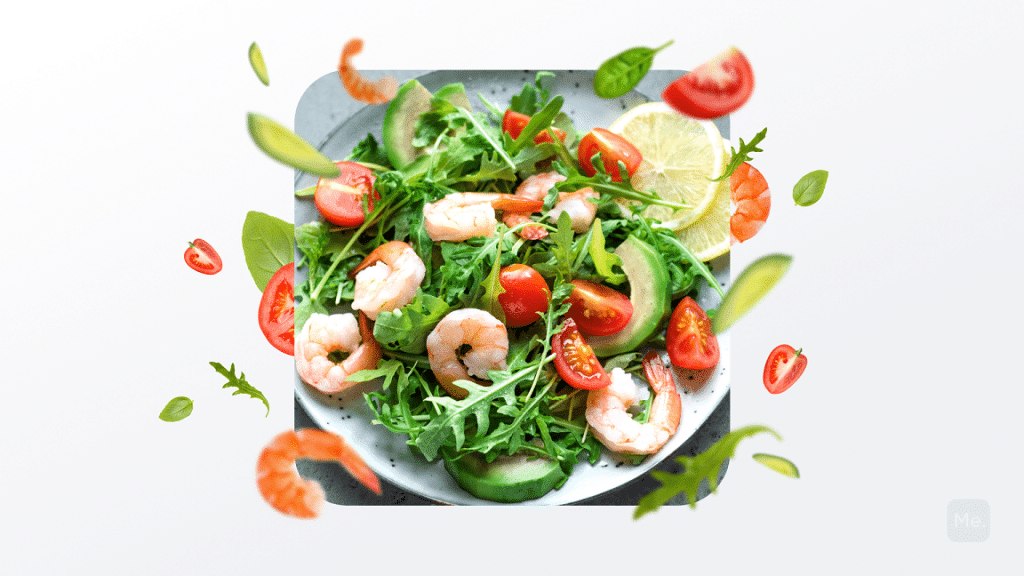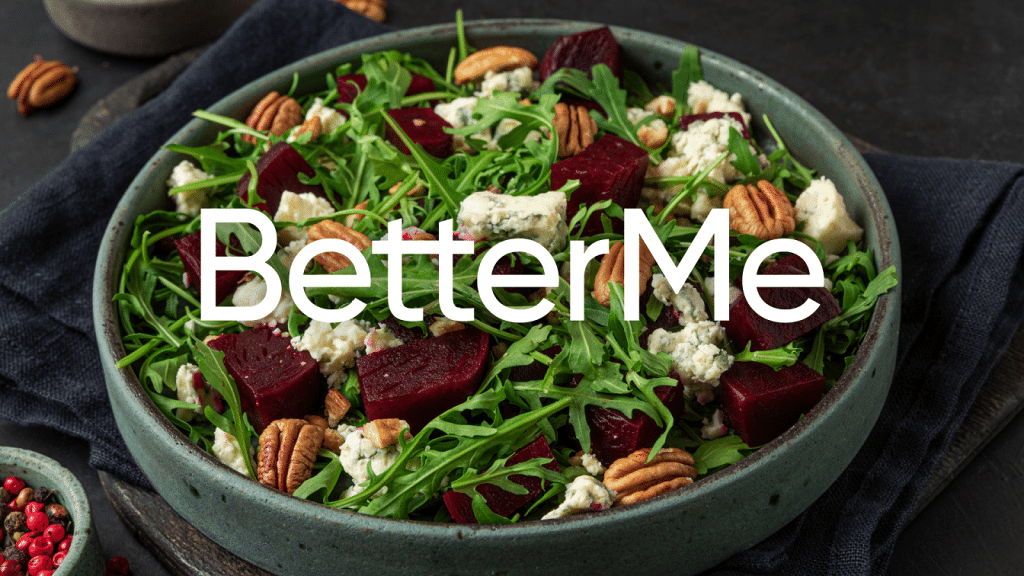Many trends are shaping the health food industry in 2022. The coronavirus pandemic has led many individuals to readjust their eating habits and patterns, with more focus on good health. As a result, you can find such as weight loss dieting and plant-based diet plans trending. One trend that individuals are slowly exploring is seasonal eating. Here we will explore this concept and discuss the benefits, risks, and charts of seasonal eating.
What Is Seasonal Eating?
As the name implies, eating seasonally encourages the consumption of in-season fruits and vegetables (7). This may also mean consuming specific fish or meat at specified times of the year.
In-season has different definitions in different parts of the world. Typically, the food that is in season depends on the location and climate (2).
Take a look at this rundown of an eating seasonally chart per the four main seasons.
In-Season Foods During Spring
In the southern hemisphere, springtime runs from the end of September to a few days before Christmas. During this period, Medicine Net states that the following foods and seasonings are typically in season (2):
Vegetables
Expect to find the following vegetables in your grocery stores during springtime:
- Cauliflower
- Broccoli
- Spinach
- Asparagus
- Cabbage
- Kale
- Beets
- Greens
- Fiddleheads
- Mushrooms
- Collards
- Arugula
- Turnip
- Garlic greens
- Dandelion
- Chard
- Mizuna
- Sorrel
- Radishes
- Cress
- Bok choy
- Mustard greens
- Rhubarb
- Sprouts
- Tatsoi
- Lettuce
- Peas
- Parsnips
Read More: Healthy Sweet Snacks For Weight Loss And Beating Sugar Craving
Fruits
Even though we would like to have peaches or other of our favorite fruits around all year, chances are they will be most available and affordable in specific months. The fruits you could enjoy during spring are (2):
- Apples
- Strawberries
Seasonings
Below are some fresh herbs you can use to spice your food during this season (2):
- Cilantro
- Mint
- Chives
- Parsley
- Marjoram
- Thyme
- Oregano
- Dill
- Sage
Summer
Summer is the hottest season, this means that it lasts from the end of December to the end of March (in the southern hemisphere). Therefore, you will find the following products in stock during summer:
Vegetables
The vegetables you will find on shelves during summer are (2):
- Cauliflower
- Beets
- Cabbage
- Broccoli
- Eggplant
- Carrots
- Celery
- Green beans
- Cucumbers
- Fennel
- Endive
- Mushrooms
- Lettuce
- Garlic
- Kohlrabi
- Sweet corn
- Onions (red and yellow)
- Scallions
- Okra
- Summer squash
- Peppers (hot and sweet)
- Potatoes
- Tomatoes
- Radicchio
- Sprouts
Fruits
You will find plenty of fruits in the local market during summer. Some of them include (2):
- Cherries
- Apricots
- Raspberries
- Blackberries
- Melons
- Peaches
- Currants
- Elderberries
- Plums
- Gooseberries
- Nectarines
Seasonings
Here are some fresh herbs and spices you will find on the shelves during this season (2):
- Mint
- Basil
- Tarragon
- Marjoram
- Cilantro
- Parsley
- Dill
- Rosemary
- Savory
Fall
In the southern hemisphere, fall lasts from the end of March to the end of June. Below is a list of produce you should expect during this season (8):
Vegetables
Below are the vegetables you will continue or start enjoying when autumn starts (8):
- Beets
- Bell peppers
- Broccoli
- Cabbage
- Cauliflower
- Carrots
- Brussels sprouts
- Collard greens
- Celery
- Lettuce
- Mushrooms
- Peas
- Green beans
- Kale
- Onions
- Parsnips
- Radishes
- Potatoes
- Pumpkin
- Spinach
- Turnips
- Rutabagas
- Yams & sweet potatoes
- Winter squash
- Swiss Chard
If you’ve mustered up the courage to crush your weight loss goal, let Betterme take the sting out of this demanding process. Our app will help you restructure your habits, remold your life and crank up your fitness results!
Fruits
The fruits in season during autumn are (8):
- Apples
- Bananas
- Cranberries
- Grapes
- Kiwifruit
- Lemons
- Limes
- Mangoes
- Pears
- Pineapples
- Raspberries
Seasonings
The herbs and spices that you will come across in the local market during fall are (8):
- Ginger
- Garlic
- Sage
- Rosemary
- Parsley (flat Italian or curled)
- Mint
- Thyme
- Lavender
- Chives
- Cilantro
Winter
In the southern hemisphere, Winter lasts from June to September. Even though it is the coldest of all seasons and contrary to what some people might think, various foods thrive during this season. Take a look!
Vegetables
Some vegetables are available in the local market and grocery stores during winter. Some of these include (8):
- Cabbage
- Brussels sprouts
- Celery
- Carrots
- Leeks
- Collard greens
- Kale
- Onions
- Parsnips
- Potatoes
- Pumpkin
- Rutabagas
- Winter squash
- Yams and sweet potatoes
- Turnips
- Swiss Chard
Fruits
Several fruits often reach their peak during the winter season. This means they will be available for sale at your local market and grocery store. They include (8):
- Bananas
- Avocados
- Apples
- Kiwifruit
- Limes
- Lemons
- Grapefruit
- Oranges
- Pineapples
- Pears
Read More: Benefits Of Turnip Greens: Reasons You Should Be Eating These Healthy Vegetables
Eating Seasonally Health Benefits
Studies have shown that consuming specific produce as it is harvested at different times of the year has several benefits. Some of the benefits of eating seasonally are:
-
Enjoying Flavorful Foods
You enjoy fresh, nutritious, and flavorful foods when you consume them in their natural season. For example, strawberries grown in the summertime are more flavorful than those grown in the winter (7).
-
Promotes Healthy Eating Patterns
Eating seasonally supports healthy eating because of the emphasis on nutritious meals. For example, you are most likely to increase vegetable consumption if you focus on consuming various vegetables in season.
-
Boosting Overall Health
Eating fruits and vegetables in season improves overall health due to the unique nutritional benefits of each fruit and vegetable. For example, strawberries contain a quercetin flavonoid that has potential anti-inflammatory properties (6).
As a result, it might ease inflammation. In addition, the high flavonoid content in strawberries may also promote heart health and reduce the risk of heart-related problems like cardiovascular disease (6). Similarly, blueberries grow in spring or late fall, and they boost overall health in various ways.
For instance, they contain a powerful antioxidant known as anthocyanin that might help reduce the risk of cancers, strokes, and heart disease (6).They also contain pterostilbene, a compound that may prevent plaque formation in the arteries (6).
-
Packing Your Body With Important Nutrients
Adding a variety of fruits and vegetables can give your body essential vitamins and minerals that you may not get throughout the year. For example, consuming Swiss chard during winter loads your body with vitamins K, A, and C, iron, fiber, potassium, and magnesium (5).
This vegetable is considered a nutritional powerhouse due to its rich nutritional profile and benefits. Similarly, consuming winter squash packs your body with antioxidants, folic acid, vitamin C, magnesium, potassium, and calcium (10).
This superfood also contains the three types of carotene-family phytochemicals: alpha, beta, and gamma. These may help reduce cancer risk and improve immune system function (10).
-
Creates Sustainable Eating Patterns
Likewise, seasonal eating promotes sustainable eating patterns because you are assured that certain foods will be available in different seasons (7).The benefit of such eating patterns is reduced food wastage and encourages long term food planning. You can also save money because buying in-season produce is usually more cost-effective.
-
Allows You To Try New Things
The different seasons offer opportunities for you to try new foods, perhaps those you have seen online, in restaurants, or on cooking shows. In addition, there are plenty of vegetables, fruits, herbs, and spices that you can try out as they come into season.
So, be open-minded and research how best you can incorporate them into your diet.
Seasonal Meal Plan Ideas
If you love trying out different recipes as seasons change, perhaps you would love trying any of the following recipes:
Winter: Winter Leaf & Parsnip Salad With Walnuts (9)
Below is Jon Torode’s bitter salad and vinaigrette recipe to try during winter as detailed by BBC Good Food (9):
Ingredients (9):
- 4 parsnips, sliced into 1cm rounds
- 100 g walnut halves
- 3 large heads chicory or radicchio, leaves separated
- 2 tbsp. vegetable oil
- 200 g mixed salad leaves, such as watercress and baby spinach
- John Torode’s vinaigrette (see below)
Preparation (9):
- Heat the oven to 200C/180C fan/gas 6. Toss the parsnips with the oil in a roasting tin, then roast until golden and tender, roughly 20 to 25 minutes. Add the nuts and roast for 15 more mins until they are colored. Remove from the oven, cool, and store to be cooked in about 2 days.
- Put parsnips, all the leaves, and nuts into a large serving bowl.
- Prepare the vinaigrette according to John Torode’s recipe, which is as follows: Whisk 1 tablespoon of Dijon mustard and 5 tablespoons of red wine vinegar together. Add one teaspoon of walnut oil and 250 ml extra virgin olive oil, then season to taste. The vinaigrette can last one month if kept in an airtight jar.
- Serve the vinaigrette on the side.
Nutrients (9):
- Calories- 132
- Fat- 10 g
- Carbs- 8 g
- Fiber- 3 g
- Protein- 3 g
Winter: Winter Vegetable & Lentil Soup (11)
Soups are perfect for this cold season. Here is one soup recipe to try, as detailed by BBC Good Food (11).
Ingredients (11):
- 85 g dried red lentils
- 3 celery sticks, sliced
- 2 carrots, quartered lengthwise, then diced
- 2 small leeks, sliced
- 3 large garlic cloves, chopped
- 2 tbsp. tomato purée
- 1 tbsp. fresh thyme leaves
- 1 tbsp. vegetable bouillon powder
- 1 heaped tsp. ground coriander
Preparation (11):
- Tip all the ingredients into a large pan. Pour over 1½ liters of boiling water, stir well and cover to cook.
- Let the mixture simmer for 30 minutes until the vegetables and lentils are tender.
- Serve the soup immediately into bowls and eat straight away. However, if you prefer a thick texture, blitz a third of the soup in a food processor or a hand blender.
Nutrients (11):
- Calories- 264
- Fat- 3 g
- Carbs- 37 g
- Fiber- 13 g
- Protein- 16 g
Spring: Herby Spring Chicken Pot Pie (3)
Check out this simple yet delicious one-pot pie recipe with spinach and herbs topped with crispy filo pastry. It is a perfect recipe for spring!
Ingredients (3):
- 6 ready-cooked chicken thighs
- 2 tbsp. olive oil, and a little extra for brushing over the pastry
- 250 g frozen spinach
- Bunch spring onions, sliced into 3 cm pieces
- 350 ml hot chicken stock
- 200 g frozen peas
- ½ tbsp. wholegrain mustard
- 200 ml half-fat crème fraîche
- ½ small bunch tarragon leaves finely chopped
- 270 g pack filo pastry
- Small bunch parsley, finely chopped
Preparation (3):
- Heat the oven to 200C/180C fan/gas 6. Heat the oil in a large, shallow casserole dish on medium heat. Add the spring onions and fry for 3 mins, then add the frozen spinach and cook until it starts to wilt or for 2 mins. Remove the skin from the chicken and shred the meat off the bone and into the pan. Stir through the stock and mustard. Bring to a simmer and cook, uncovered, for 5 to 10 mins.
- Stir in the crème Fraiche, peas, and herbs, then remove from the heat. Scrunch the filo pastry sheets over the mixture, brush with a bit of oil and bake for 15 to 20 mins or until golden brown.
Nutrients (3):
- Calories- 526
- Fat- 22 g
- Carbs- 47 g
- Fiber- 7 g
- Protein- 32 g
Reasons why BetterMe is a safe bet: a wide range of calorie-blasting workouts, finger-licking recipes, 24/7 support, challenges that’ll keep you on your best game, and that just scratches the surface! Start using our app and watch the magic happen.
Summer: Summer Allotment Salad With English Mustard Dressing (4)
Here is an easy salad to help you eat enough veggies with vegetables in season like potatoes. Check out the recipe as is, obtained from BBC Good Food (4):
Ingredients (4):
- 2 bunches of French Breakfast radishes, leaves washed
- 400 g new-season potatoes, scrubbed
- 1 red onion, peeled and sliced
- Small handful dill fronds, chopped
- 1 small cucumber, peeled, deseeded and sliced into half-moons
For the dressing (4):
- 20 g English mustard
- 100 ml rapeseed oil
- 1 tbsp. white wine vinegar
- Pinch of white caster sugar
- 1 tbsp. mustard seeds, toasted in a dry frying pan
Preparation (4):
- Boil salted water in a pan and simmer the potatoes for about 10 mins until tender. Leave them to steam-dry until warm.
- Elsewhere, whisk together all the other ingredients, then halve the warm potatoes and toss through the dressing. If you are serving this salad elsewhere, like on a picnic, carry the potatoes and other ingredients separately. You should toss everything together as you serve.
Nutrients (4):
- Calories- 144
- Fat- 11 g
- Carbs- 8 g
- Fiber- 2 g
- Protein- 2 g
Autumn: Butternut Squash Soup With Chili & Crème Fraîche (1)
Butter squash is one of the vegetables that are in season during autumn. Check out this easy recipe from BBC Good Food and try it if you have exhausted ideas on how to make this squash (1):
Ingredients (1):
- 1 butternut squash, about 1kg, peeled and deseeded
- 2 onions, diced
- 850 ml hot vegetable stock
- 2 tbsp. olive oil
- 4 tbsp. crème fraîche, plus more to serve
- 2 mild red chilies, deseeded and finely chopped
- 1 garlic clove, thinly sliced
- 1 tbsp. butter
Preparation (1):
- Heat the oven to 200C/180C fan/gas 6.
- Cut the squash into large cubes, roughly 4 cm and 1½ inches across, then toss in a large roasting tin with 1 tablespoon of the olive oil.
- Roast for 30 minutes, turning once during cooking (preferably after 15 minutes), until golden and soft.
- Melt the butter with the remaining 1 tablespoon of olive oil in a large saucepan as the butternut squash cooks. Add the onions, garlic clove and three-quarters of the chilies. Cover and cook on very low heat for 15 to 20 minutes until the onions are completely soft.
- Tip the butternut squash into the pan, add the stock and crème fraîche, and whizz with a stick blender until smooth. If you want an extra silky soup, pour it into a liquidizer and blitz it in batches.
- Return to the pan and gently reheat while seasoning to taste. When ready, serve the soup in bowls with swirls of crème fraîche and a scattering of the extra chopped chili.
Nutrients (1):
- Calories- 264
- Fat- 15 g
- Carbs- 28 g
- Fiber- 6 g
- Protein- 5 g
Note: The nutritional information provided in each recipe is for one serving. For more details on the recipes, please visit the respective sites on BBC Good Food. Additionally, consult with your dietitian and doctor before adding any or all of these recipes to your diet plan. Be sure to let them know your reasons for adding such recipes to your diet plan. For example, some reasons could be for weight loss purposes or introducing variety.
The Bottom Line
Eating seasonally involves consuming fruits and vegetables that are in season. Different fruits, vegetables, and seasonings peak during different seasons. Although you can stock and consume them in other seasons, you are urged to consume them when in season.
This is because they are more flavorful and tasty then, not to mention cheaper. The seasonal eating approach helps you eat a variety of foods and allows for long term food planning. Consult your doctor and dietitian before making any major dietary changes, especially if you are being treated for any medical conditions.
DISCLAIMER:
This article is intended for general informational purposes only and does not serve to address individual circumstances. It is not a substitute for professional advice or help and should not be relied on for making any kind of decision-making. Any action taken as a direct or indirect result of the information in this article is entirely at your own risk and is your sole responsibility.
BetterMe, its content staff, and its medical advisors accept no responsibility for inaccuracies, errors, misstatements, inconsistencies, or omissions and specifically disclaim any liability, loss or risk, personal, professional or otherwise, which may be incurred as a consequence, directly or indirectly, of the use and/or application of any content.
You should always seek the advice of your physician or other qualified health provider with any questions you may have regarding a medical condition or your specific situation. Never disregard professional medical advice or delay seeking it because of BetterMe content. If you suspect or think you may have a medical emergency, call your doctor.
SOURCES:
- Butternut squash soup with chilli & crème fraiche (2022, bbcgoodfood.com)
- Food and Nutrition: What Foods Are in Season When (2018, medicinenet.com)
- Herby spring chicken pot pie (2022, bbcgoodfood.com)
- Summer allotment salad with English mustard dressing (2022, bbcgoodfood.com)
- Swiss Chard: 9 Healthy Facts (2010, webmd.com)
- Top 12 healthful fruits (2019, medicalnewstoday.com)
- What to Know About Seasonal Eating (2021, webmd.com)
- What’s in season now? (2022, snapped.fns.usda.gov)
- Winter leaf & parsnip salad with walnuts (2022, bbcgoodfood.com)
- Winter Squash: Recipes and Tips (2007, webmd.com)
- Winter vegetable & lentil soup (2022, bbcgoodfood.com)

















